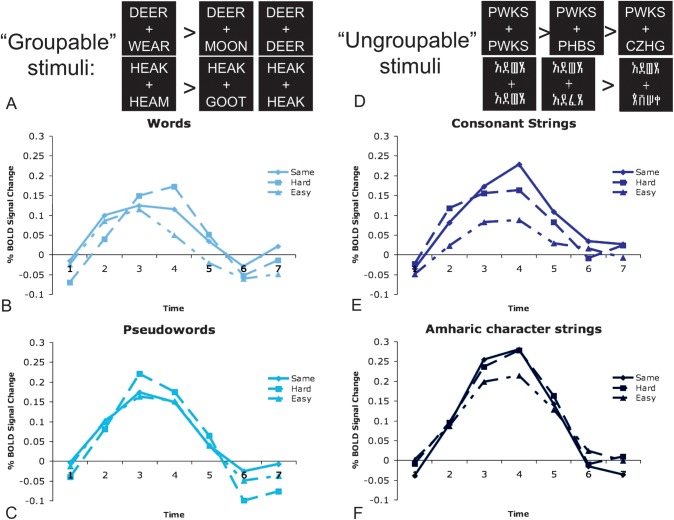Figure 8.
Difficulty by stimulus type by timecourse interactions in the left OT region. The left OT fusiform region (−44, −67, −4, MNI) was identified in the whole-brain pair type by timecourse analysis and shown in Figure 7. Note that all imaging effects in this region remain significant even when RT is regressed out. (A) Depiction of significant pair type by timecourse BOLD interaction for “groupable” strings (words and pseudowords). (B) BOLD group-average timecourses for the 3 pair types of words: hard > easy = same pairs. (C) BOLD group-average timecourses for the 3 pair types of pseudowords: hard > easy = same pairs. (D) Depiction of significant pair type by timecourse BOLD interaction for “ungroupable” stimuli (consonant strings and Amharic character strings). (E) BOLD group-average timecourses for the 3 pair types of consonant strings: same > hard > easy pairs. (F) BOLD group-average timecourses for the 3 pair types of Amharic character strings: same = hard > easy pairs.

